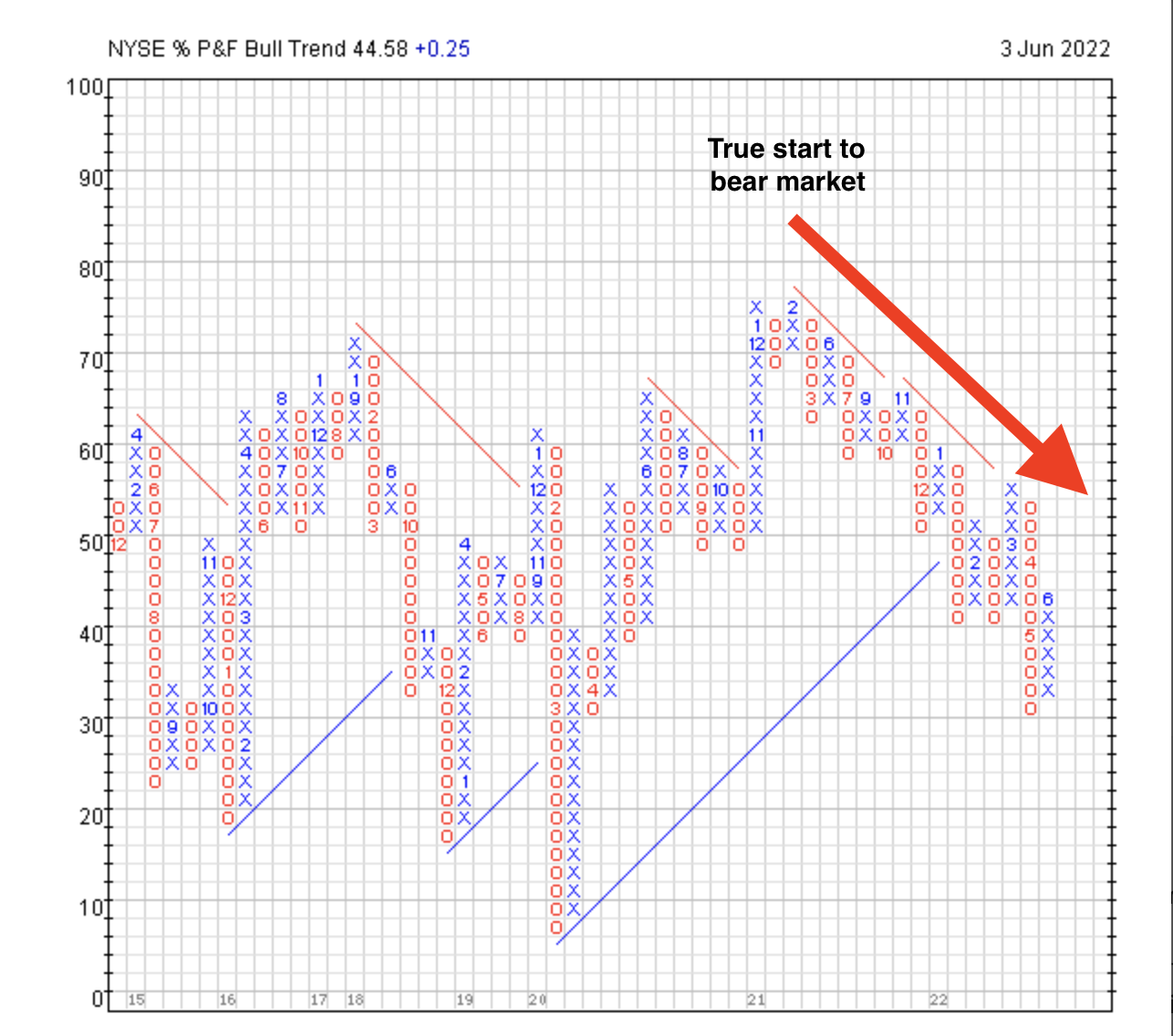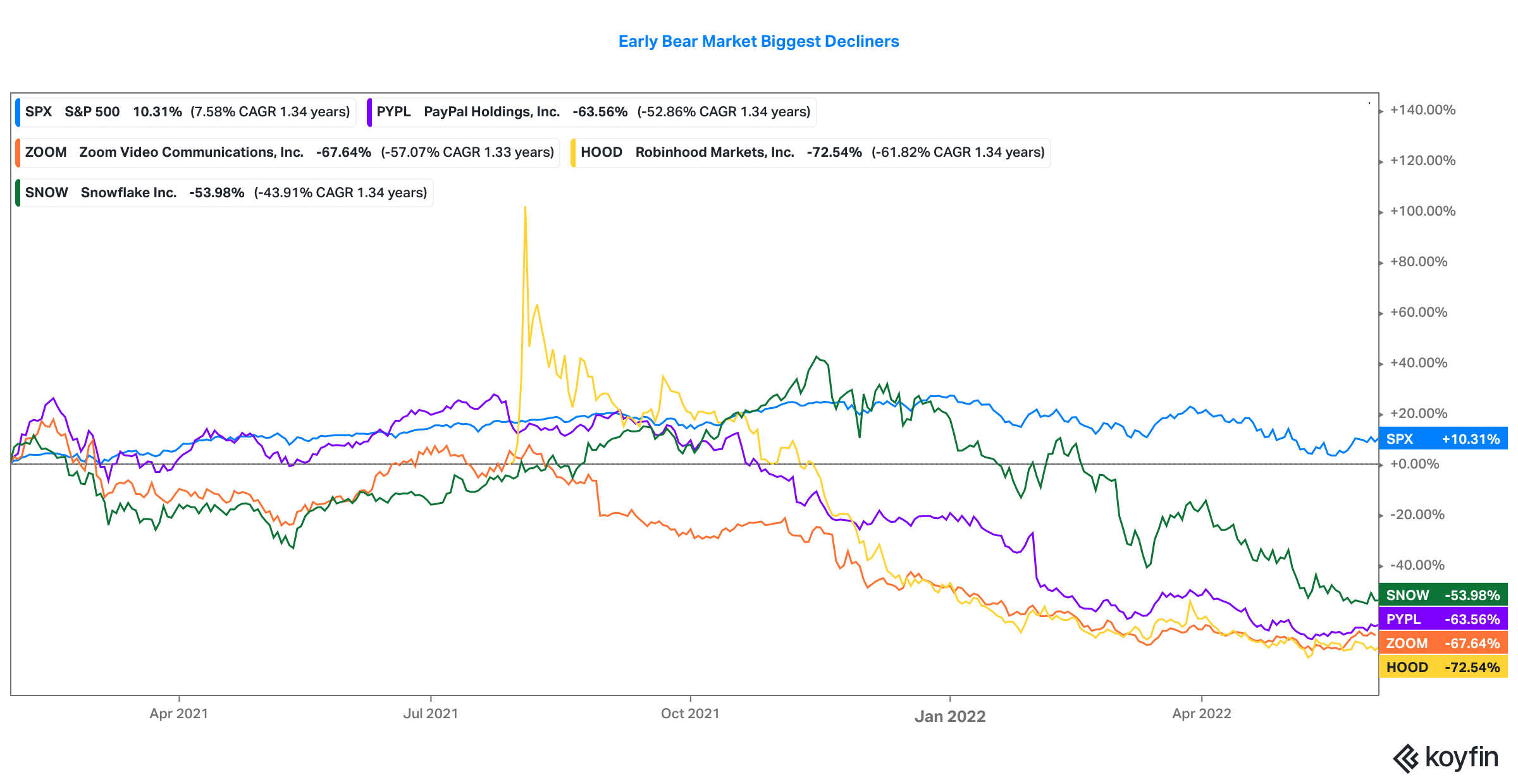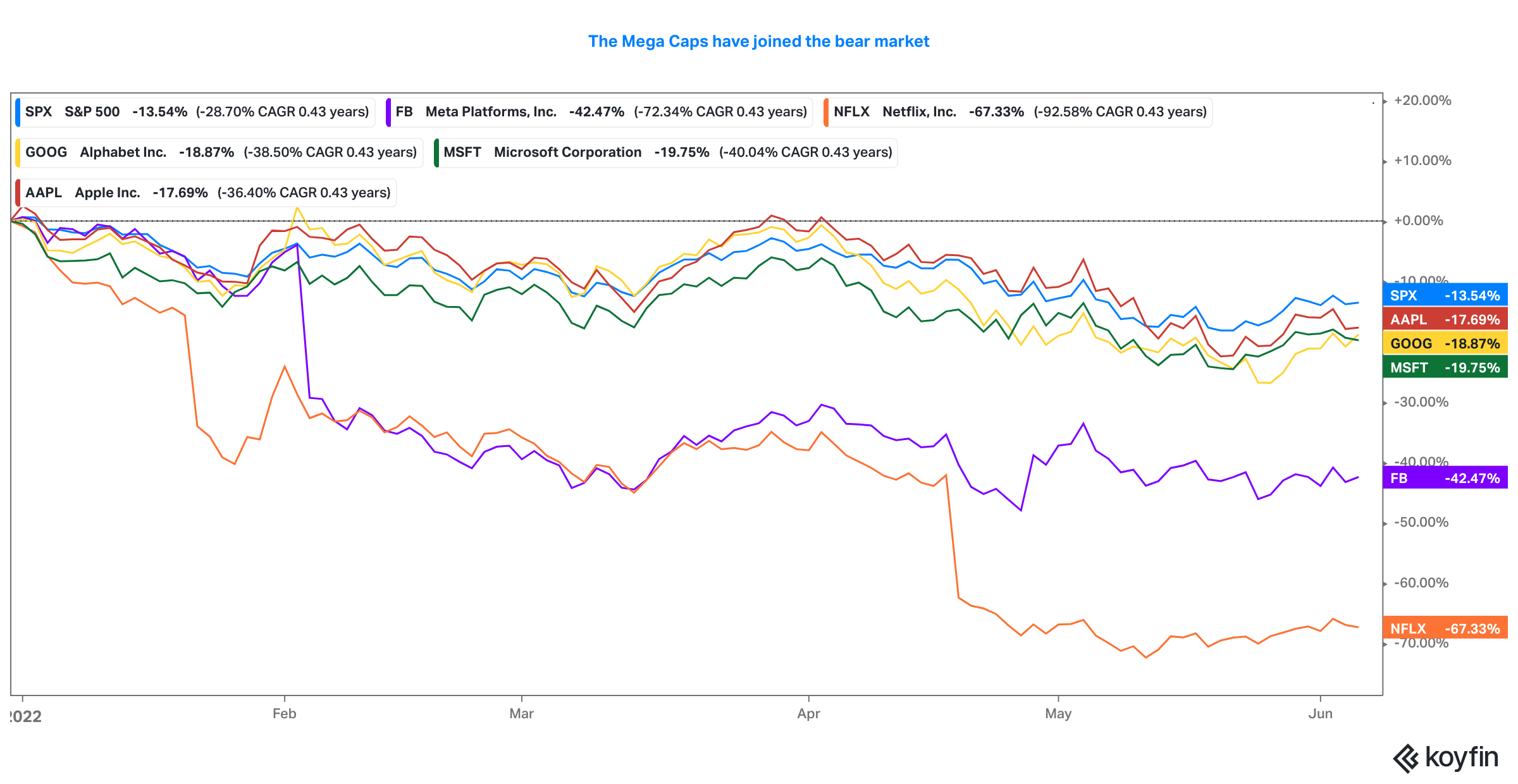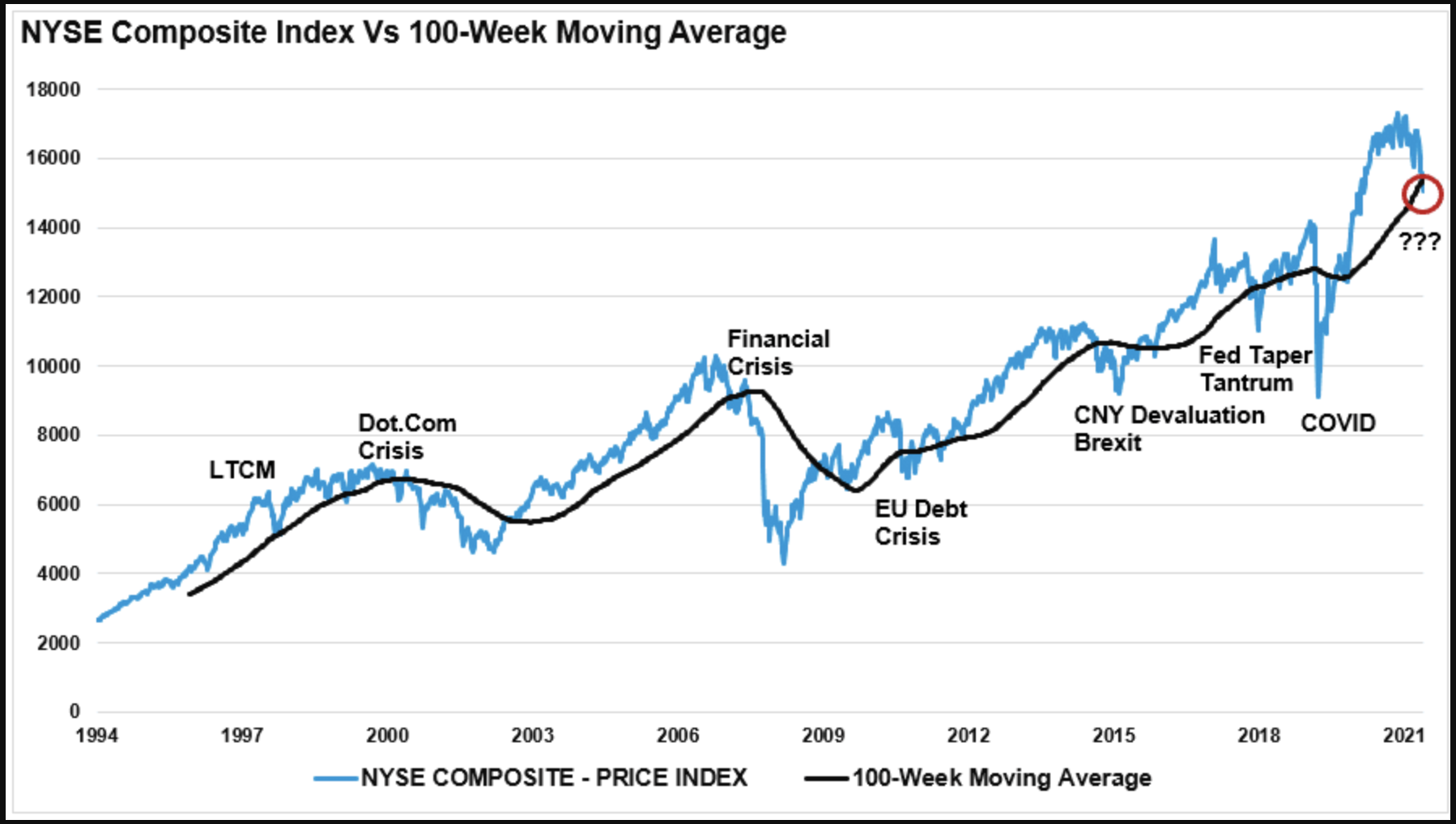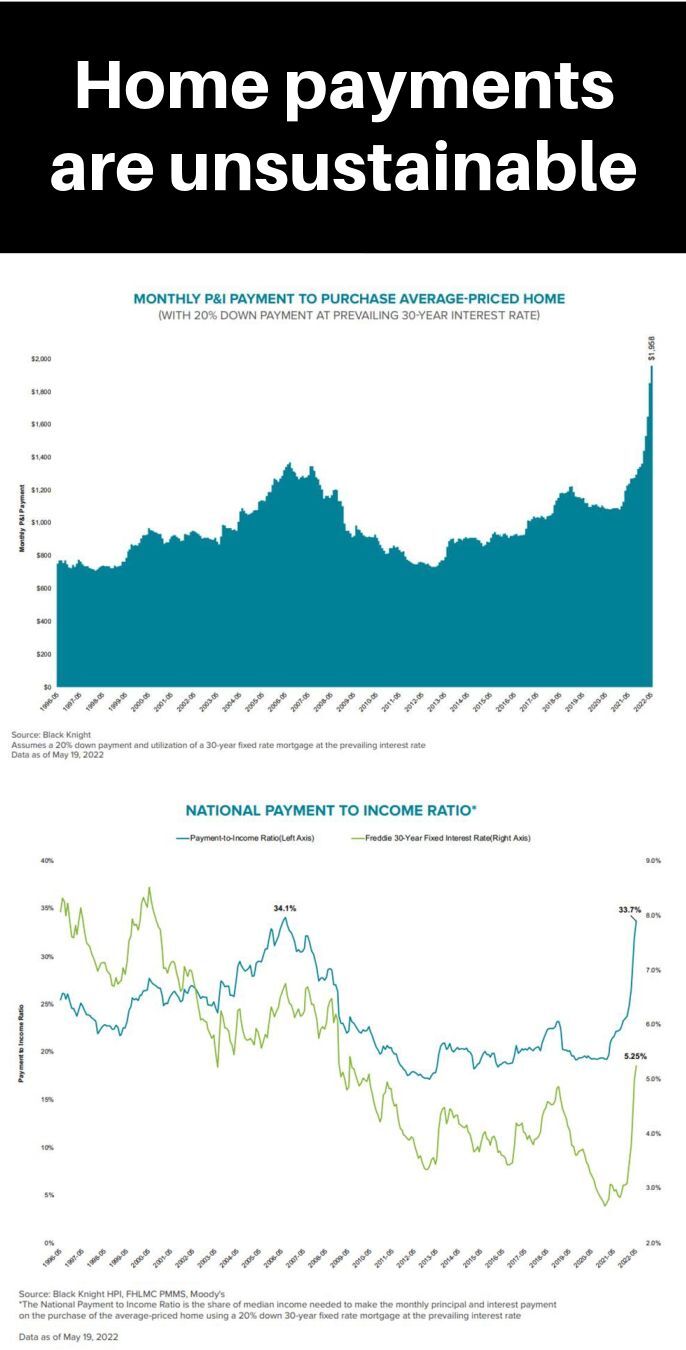Related Blogs
June 9, 2022 | Avalon Team
This year’s stock market has been unlike many have seen in their lifetimes.
Dramatic declines have been followed by powerful rallies… but at the end of the day, the net trend of the market has been lower.
At its recent low, the S&P 500 is down 18% from the beginning of the year.
This has worked the financial media into a frenzy with headlines like:
First, we say, “What took you so long,” as our own view of the “true market” has been signaling a stealth Bear Market for over a year.
Just look at the NYSE Bullish Percent Indicator which, as many know, is our true measure of the market. It clearly, unequivocally, shows the percentage of stocks that are in the control of buying demand has been steadily falling since February of 2021.
Every rally has been met with increasing selling that has caused a pattern of lower highs as institutions have used each rally to unload stocks.
The selling began with sectors like e-commerce, cloud software, and fintech getting crushed, with some names down 70% or more.
Take a look at a few of the popular names that have been part of the early selling… PYPL, ZOOM, HOOD, and SNOW, to name a few…
To the casual observer, such carnage may have gone unnoticed as the market “generals,” the biggest of the mega-caps like Apple, Amazon, Facebook, Google, and Netflix, kept marching higher, causing the cap-weighted indexes, to also record higher and higher prices, finally peaking in early January.
But in November of last year, slowly but surely, even the generals started to look tired, and they too have not joined, this finally recognized Bear Market.
Today there is considerable technical evidence that U.S. financial markets are in a Bear Market.
The NYSE Composite (U.S. stocks + ADRs + bond ETFs) has broken below its 100-week moving average. In the past 25 years, every recession and/or crisis has coincided with a break of that long-term moving mean.
It’s worth noting that some of the stock market’s biggest rallies have occurred within Bear Markets.
Bargain hunters become convinced that a low is in and begin to buy. This leads to more buying, as those who sold stocks short begin buying back shares. Finally, this results in a final move higher fueled by emotional investors succumbing to FOMO.
Every Bear Market between 1901 and 2015, spawned at least one 5% rally. Rallies of 10% or more interrupted two-thirds of the 21 Bear Markets over that span.
And these Bear Market rallies will trick some investors into buying early… often way too early.
And we think that’s the risk now…
Looking at the NYSE Bullish Percent chart from earlier you’ll see that it’s currently in a column of X’s. This tells us that DEMAND is in control… for the moment.
But again, we’ve seen these brief periods of demand for the past year and each has given way to renewed selling.
Looking a little closer at the volume, we can see that the volume on the current rally is light.
The boxed area represents a massive amount of supply of stock from investors who are stuck with higher shares and who will be anxious to unload if given the chance.
So the present market is giving investors an opportunity to prepare for what is likely to be another leg lower. In fact, it’s probably going to be the easiest and most obvious bearish trade this summer.
Expect Volatility to Increase
Next week has the potential for some explosive events.
First, on June 17th, there is triple-witching, the term applied to the simultaneous expiration of stock options, stock index futures, and stock index options contracts all on the same trading day.
This happens four times a year: on the third Friday of March, June, September, and December. And this expiration has almost $4 trillion (with a T) of notional exposure with $1.7T in just SPX options alone.
As far as I know, this is going to be a record.
And before this, we have VIX expiration (volatility futures and options) and the Fed interest rate hikes. The June 10 release of CPI will also be closely watched and could add to the already volatile mix of news items that will impact investors.
Recession Update
I have been warning investors about the increased likelihood of the economy officially entering a recession. This week, I’ve seen a few additional data points that confirm to me that this is indeed the direction we are heading.
First, I have previously cited my concerns for the housing industry and believe that new construction is about to take a major hit.
The double whammy of the surge in construction costs plus the increase in mortgage rates has made new homes unaffordable.
This chart confirms my fears.
The graph shows that the monthly mortgage payment required to purchase an average-priced home is almost $700 more than it stood before the pandemic.
It also dwarfs the pre-housing crisis levels.
Next, Target (TGT) has warned for the second time in as many weeks:
- Profit will drop because of excess inventory.
- Target will more quickly to unload excess inventory in current quarter.
- Target now sees 2Q operating margin rate in range around 2%.
Target is now down about 25% since its first warning in May and 33% YTD. We remind you that Target’s concerns and those of other retailers are a stern warning that consumers are struggling.
Given that personal consumption is two-thirds of the economy, we should not take these messages lightly.
Here’s another stock that I’ve been bearish on…
Cracker Barrel (CBRL) reported the following:
- Net income fell by 17.8%; EPS fell by 15.6%.
- The Company anticipates the near-term consumer environment will remain challenged due to high inflation and lower consumer confidence, especially for the 65+ group.
- The Company expects operating margins in the fourth quarter to be adversely impacted by commodity, wage, and other operating expenses inflation.
These warnings are citing conditions ubiquitous to the general economy and all companies.
I do not believe that the impact of these conditions has been fully reflected in the stock market.
As such, I remain generally bearish on the stock market and anticipate further market weakness in the weeks ahead.
If you have any questions or have been considering hiring an advisor, then schedule a free consultation with one of our advisors today. There’s no risk or obligation—let's just talk.
Tags

Free Guide: How to Find the Best Advisor for You
Get our absolutely free guide that covers different types of advisory services you'll encounter, differences between RIAs and broker-dealers, questions you’ll want to ask when interviewing advisors, and data any good financial advisor should know about you and your portfolio.




